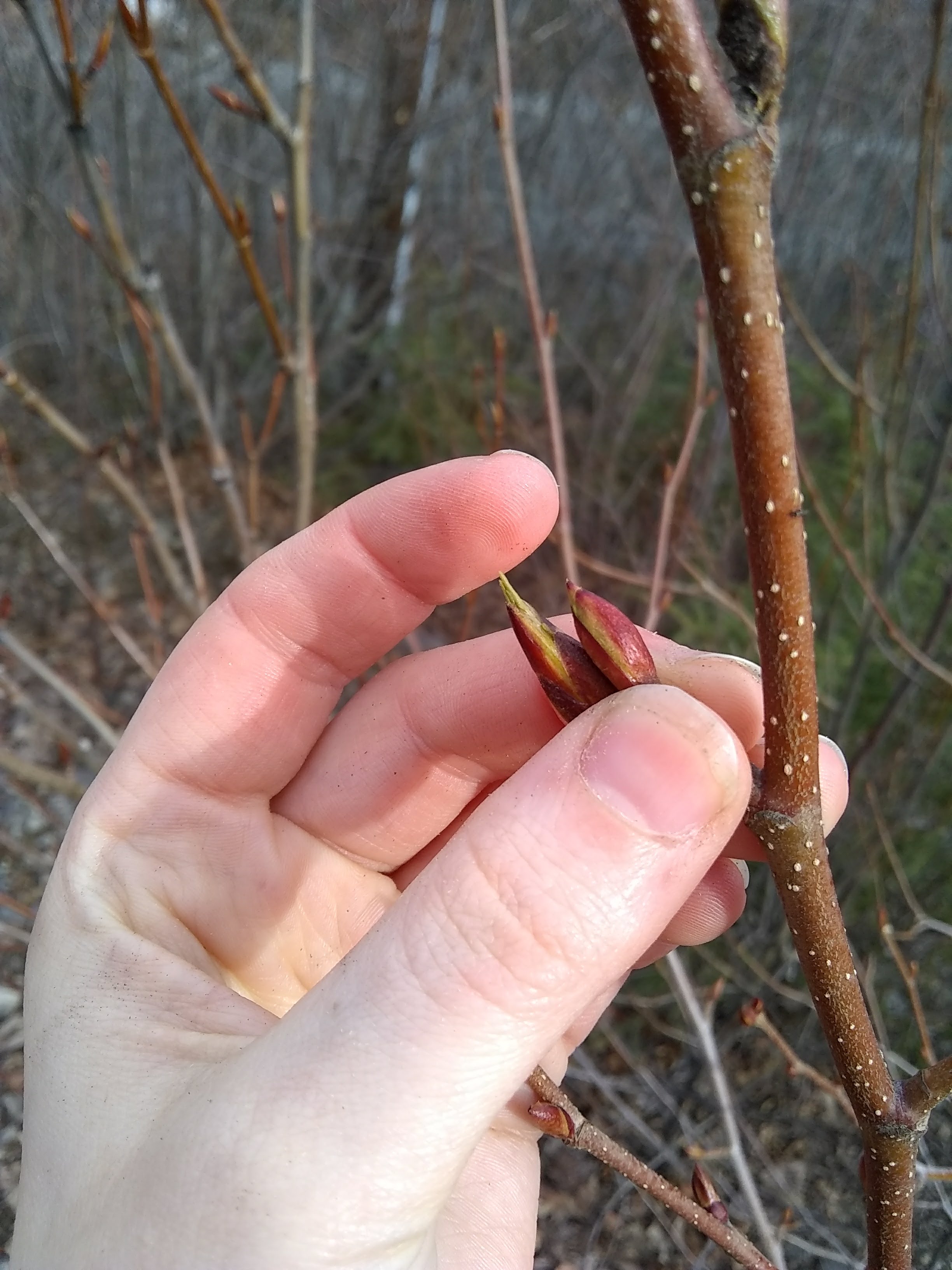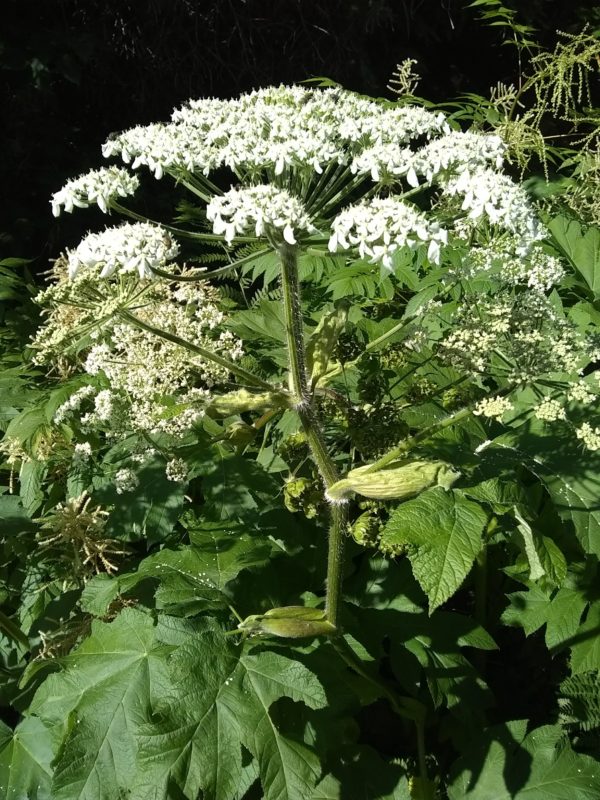A while back, I wrote a post on why knowing the scientific name is important. If you’re discussing a plant with someone whose native language isn’t English, you can use the scientific name to make sure you’re talking about the same plant. It’s also helpful when you’re looking up pictures on the internet to help with identification. In this post, we’re going to break down the taxonomy, or the classification of organisms (in this case, plants).
The three basics of taxonomy
Families
We are going to start with families, because it came up during my tree series of posts. I called one set of trees “Pine” trees because they were in the Pinaceae, or Pine family versus the Picea (Pine) genus, not all of the trees were evergreen.
Anyways, a family of plants will have some similar characteristics. For instance, Labiatae (AKA Lamiaceae) family, or the mint family encompasses a lot from, well, mint to hemp nettle. One of the characteristics of a plant from the mint family is that it has a square stem. Some other plants that are in the Labiatae family are Scutellaria (skullcap), and Melissa (lemon balm).
Now, Families are not the top of the taxonomy classification. However, for the beginner, it’s probably the most you’ll look at regarding plants. The top classification is kingdom, which would be Plantae. After that, you have Division, Class, Subclass, Order (or Series), Family, Genus, Species. Anything after Plantae would be different for each plant that you look at.

Genuses
Genuses group plants that are similar together. They have even MORE characteristics that are similar. As DNA has come into play, plants have been renamed so that the genus is more accurate.
Going back to the mint example, mint and hemp nettle are very different from each other, even though they’re in the same family. The genus name for mint is Menthus, but it’s also the genus name for peppermint and pennyroyal. Now, mint and peppermint are pretty close in what they are used for, but pennyroyal has slightly different properties. It also looks different.
Something that also looks different from pennyroyal, but more similar to mint, is hemp nettle. Hemp nettle is in the mint family, but has a genus name of Galeopsis.

Species
The species is how you tell one plant from another. Each species is of its own, unless it hybridizes with other species of the same genus and then you’re plain out of luck (This is the case with willows – there are over 45 species in Alaska which easily mix with each other). Often times this will describe the plant, for instance Salix alba meaning white willow. Below I’ve included some common meanings.
Common meanings
Colors

Alba: White
Ater: Blackaurea
Aurea: Chartreuse
Chrysus: Yellow
Coccineus: Scarlet
Ferrugineus: Rusty
Glauca: Pale blue-grey
Haema: Blood red
Lacteus: Milky
Leuc: White
Lividus: Blue-gray
Luridus: Pale
Yellowluteus: Yellow
Nigra/nigrum: Black/dark
Puniceus: Red-purple
Purpureus: Purple
Rosea: Rose
Rubra: Red
Virens: Green
Origins or Habitat
Alpinus: Alpine
Alaskanum Alaska
Americana: Americanamur
Amur: River – Asia
Arctica: From the arctic
Canadensis: Canada
Chinensis: China
Japonica: Japan
Maritima: Sea side
Montana: Mountains
Occidentalis: West – North America
Orientalis: East – Asia
Palustre/palustris: marsh
Sibirica: Siberia
Sylvestris: Woodland
Virginiana: Virginia, Form, or Habit
Sitchensis: swamp
Common Root Words – Usually descriptors
Anthos: Flower
Angustifolia: Narrowleafed
Contorta: Twisted
Globosa: Rounded
Gracilis: Graceful
Maculata: Spotted
Magnus: Large
Nana: Dwarf
Pendula: Weeping
Prostrata: Creeping
Reptans: Creeping
Brevi: Short
Carpus: Wrist-like
Fili: Threadlike
Flora: Flower
Folius: Foliage
Grandi: Large
Hetero: Diverse
Laevis: Smooth
Latifolia: Broadleaf
Lepto: Slender
Macro: Large
Mega: Big
Micro: Small
Mono: Single
Multi: Many
Phyllos: Leaf/Foliage
Platy: Flat/Broad
Poly: Many
Trifolia: Three-leaf
Vulgaris: Common
Other
Ledum: Rock Flower
Achillea: having to do with Achilles – Yarrow
Artemisia: having to do with Artemis – Wormwood
Heracleum having to do with Heracles (Hercules was the Roman version) – Cow Parsnip
Equisetum – having to do with horses – Horsetail

Artemisia tilesii – Wormwood 
Heracleum maximum – Cow Parsnip 
Equisetum arvense – Horsetail 
Achillea millifolium – Yarrow
Fun names
Shepherd’s Purse – bursa-pastoris, literally meaning pastoral purse, while the genus Capsella means little box
Burnet – Sanguisorba meaning absorb blood
Yellow Rattle – Rhianthus having to do with the nose or nasal passages, and the pods resembling the nose (Not to mention being helpful for allergies).
Now this list is by no means exhaustive, but it gives you a jumping off point.
Time for a joke: Those who don’t know the difference between entomology and etymology bug me in words I can’t describe.
Yes, lame science pun – entomology being the study of insects and etymology being the study of the origin of words.
Anyways, have a wonderful week, keep learning how to feel better naturally, the Alaskan way.




